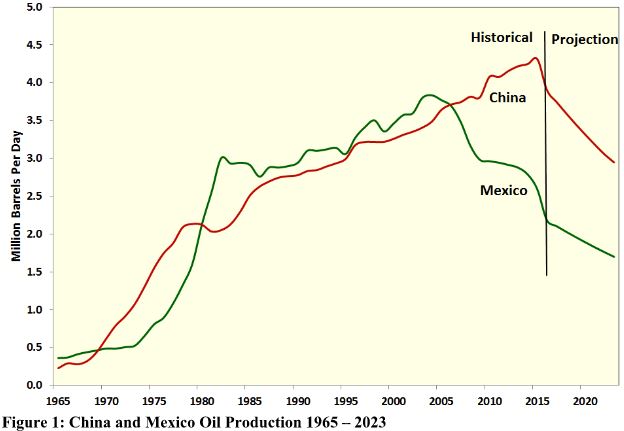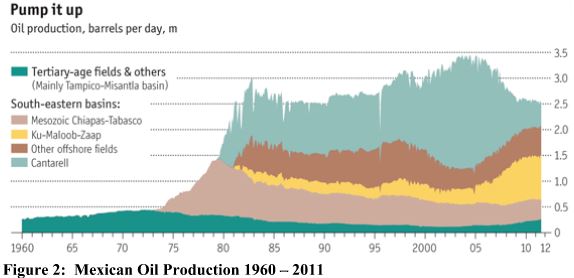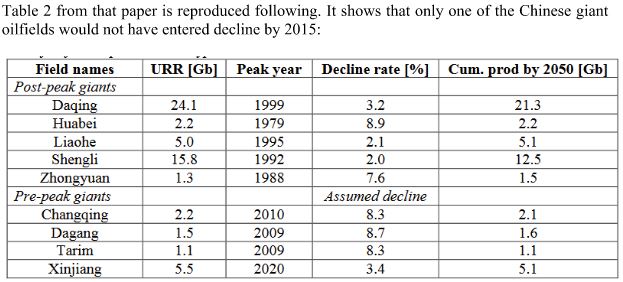Mexico, China and Beyond
Ron Patterson’s post asking if China’s oil production has peaked reminded me of Mexico
which also produces mainly from supergiant fields. Mexico’s oil production peaked in 2004 and has averaged a 3.5 percent per annum decline rate since, with a peak yearly decline rate of 9 percent in 2008. China’s oil production has fallen 10% from its peak in 2015. Part of that is oil price-related as the Daqing oil field has an operating cost of $46 per barrel and could reverse as the oil price rises. The comparison of China and Mexico with a projection to 2023 is shown in the following figure:

The production histories tracked each other from 1965 until they parted ways in 2005. Themainstay of Mexican production had been the Cantarell field as shown by this graph from The Economist with data up to 2011:

Cantarell production had been pumped up with nitrogen injection until sudden collapse in2005. Part of the decline from Cantarell was offset by increased production from Ku-Maloob-Zaap. Mexico is now producing slightly more oil than it consumes. In the absence of successful privately funded oil exploration from here, Mexico will become an importer of both oil and food.
A good description of the Chinese oil production industry is provided by a paper by Aleklett, from the University of Uppsala, et al from 2010 using data up to 2007. One field, Daqing discovered in 1959, had been producing about a million barrels per day for close to 30 years:

Table 2 from that paper is reproduced following. It shows that only one of the Chinese giant oilfields would not have entered decline by 2015:

…click on the above link to read the rest of the article…